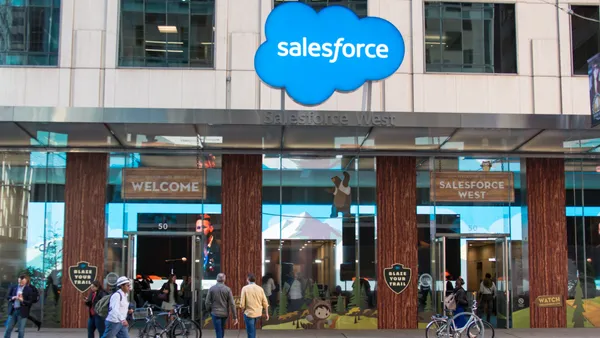Dive Brief:
- The AI adoption rate is slowing among desk workers despite enterprise emphasis on the technology, a Slack report published Tuesday found.
- Over the last three months, adoption plateaued, growing three percentage points globally, according to the survey of more than 17,000 employees, which was administered by Qualtrics. Before the slowdown, AI adoption increased from 20% to 32% globally during the six-month period ending in March. Excitement has cooled too, dropping six percentage points globally.
- Nearly half of desk workers said they hide their AI use from managers, according to the survey. Workers said the discomfort stems from feeling they could be seen as incompetent, lazy or cheating.
Dive Insight:
Enterprise focus on AI is unwavering even in the face of mixed signals.
Nearly all organizations plan to invest in AI next year, and 97% of executives said they have a sense of urgency to incorporate generative AI into business operations, according to the Slack survey.
At the same time, enterprises have grappled with roadblocks to implementing the technology and challenges with scaling use cases. Cooling adoption rates and signs of prevalent shadow AI further complicates the situation.
Creating clear norms for AI use, and celebrating wins, can help workers understand what’s expected of them during this shift, according to Christina Janzer, SVP of research and analytics at Slack. “There’s a lot that we can do to address this.”
So far, leaders are feeling confident they can overcome AI’s challenges. Two-thirds of leaders trust their organization’s ability to manage AI-related risks, such as data management, skill gaps and shadow AI, according to a TeamViewer report.
The enterprise is in a far better position to handle the technology’s downsides than it was two years ago. Best practices and frameworks to guide adoption plans have proliferated. Vendors released tools to strengthen governance and guardrails. Plus, some of the hype is dissipating, making way for more orchestrated initiatives.
But as the risks have come clearer into view, vendors expect some organizations to prematurely pull back on AI.
“We can get through this,” Janzer said. “We still see so much opportunity for AI to improve people’s jobs, to reduce the work of work, to give people more time to work on meaningful tasks. We just need to better address the blockers.”














